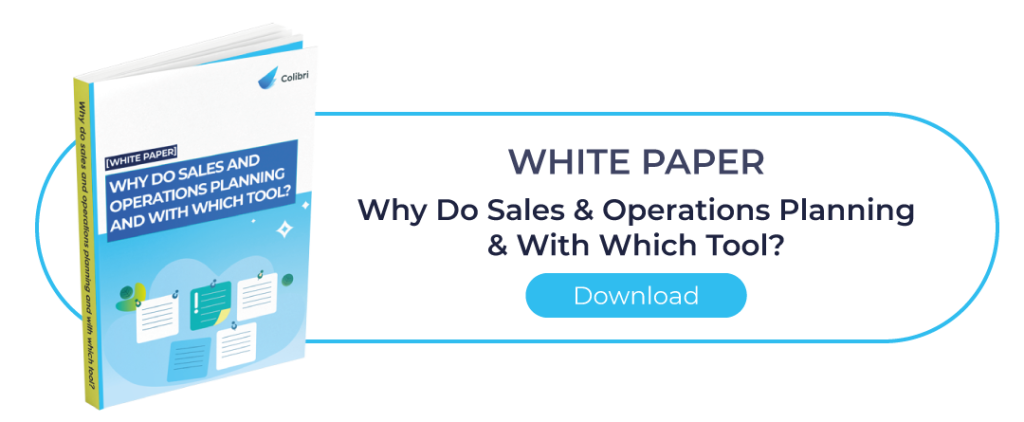With the digitalization of the Supply Chain, collaborative tools are becoming increasingly popular. Find out why more and more companies are using these new solutions to meet the challenges of demand planning.
The many challenges of demand planning
To be able to work with reliable daily, weekly or monthly demand plans, supply chain teams need operational demand planning processes that accurately estimate future sales. However, they need a good understanding of how sales work, and a continuous monitoring of the demand at various levels: quantity, price, quality and timing is necessary to achieve this.
Demand planning as part of the sales and operations planning (S&OP) process, is used to simulate the impact of industrial, financial and organizational strategies. To be effective, the process must be cross-functional, bringing together most of the company’s departments. That is: the marketing department, in charge of defining which products are sold on which markets; the sales department, which deals with customers; logistics, which manages coordination and delivery; and of course, the HR and finance departments which play a key role in implementing the company’s strategy. In some cases, the S&OP process can also involve external parties, such as long-term partners.
In short, supply chain issues are diverse, and teams need efficient tools to be able to work effectively. In this context, collaborative solutions are to be preferred, especially those offering advanced analysis and reporting functionalities. In the fast-moving world of supply chain, tomorrow’s winners will be the first to adopt these tools!

Demand planning: the 5 key advantages of a collaborative tool
Intuitive, flexible, alloing improved visibility… Collaborative solutions are a great asset to their users. Let’s look at the 5 key advantages that help supply chain teams be more productive.
- Data centralization without risk of error. To improve forecast quality, demand planners continuously collect large volumes of data from sources scattered throughout their company. They review order books and financial budgets, they consider procurement constraints and new product launches, etc. Using a collaborative tool promotes a single reference format, removing the need to check, control, format, etc. Productivity is thus improved, while the risk of errors is minimized.
- A 360° view for all departments. With a single collaborative tool, companies offer their staff a better cross-functional visibility and a shared global overview of the supply chain. This way, everyone can contribute to the process and enrich it in real time, which increases efficiency tenfold. An efficient SCM tool is also empowering for teams who benefit from easy access to information. In the past, these innovative solutions were only available to companies with significant financial and human resources, which is no longer the case.
- Time savings and immediacy. By using a centralized collaboration tool, supply chain teams minimize data inertia and time-consuming information exchanges. In an increasingly competitive environment, speed and accuracy of decision making make the difference. Intuitive and providing reliable and complete analyses in just a few clicks, collaborative demand planning software enables teams to maximize time savings and efficiency at all levels. These tools not only contribute to achieving quantified objectives and meeting deadlines, but also reduce stress levels of the teams.
- A flexible and responsive tool that outperforms Excel. Even today, companies often use spreadsheets to manage demand planning, although Excel does not adapt well to collaborative processes. Information sharing, multi-user data updating, commenting, alerting, in other words, everything that is essential to demand planning is complex and cumbersome on spreadsheets. SCM software, on the other hand, is designed to be intuitive, flexible and to optimize collaboration between teams.
Also read: Supply chain planning: 7 signs that show it’s time to drop Excel
- Strengthening the teams’ skills. Modern tools allow for easy information and feedback. To motivate your teams, involve them in selecting and support them in implementing and using their new supply chain tool. In addition, being able to exchange with peers is necessarily beneficial to your employees and having access to user communities reinforces the sense of belonging.
Also read: Supply Chain: How do you develop the skills of your teams?
Colibri is a 100% Cloud based supply chain software. Ideal for companies wishing to improve their Supply Chain Management process, it offers intuitive and collaborative features. Get more flexibility, reactivity, efficiency and immediacy with Colibri.
All of your teams can work together and benefit from easy access to information, from marketing and sales departments to management and production. Each link in the chain can, for example, contribute to the sales forecasts and consult data that is continuously updated. Colibri even enables collaboration beyond the organization. Connections and forecast transfers are possible between companies, all in real time. Want to know more?






